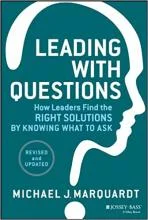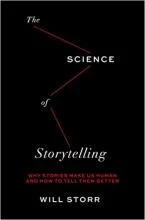Whether you are an analyst, a business operations pro, an upwardly mobile team lead, or a senior executive, working with data is now a critical success factor to advancing your career. While hardcore data skills like being good at math and computer science are key, softer skills are equally important and sometimes harder to master.
Soft data skills involve being able to communicate your vision and persuade stakeholders with a compelling story. Unfortunately, most data science courses don’t teach these skills, which makes obtaining these types of skills a challenge.
To evolve your personal development on the data storytelling front, consider these valuable books:
Leading with Questions

By Michael J. Marquardt
Why you should read it: When I studied engineering in college, I had a professor who would say, “In the real world, figuring out the answers is the easy part. It’s much harder to ask the right questions.” This has stuck with me as I built a career as a data operator and a data-driven manager. Before we start mucking around with data prep, data analysis, or visualizations, it is critical to ground ourselves in the questions we are trying to answer. Further, when we are managing teams charged with delivering data-driven insights, it is important to frame the questions for our teams and coach others on asking the right questions.
[ Read also: 9 must-read books to make you a stronger communicator and 10 leadership books to stretch your skills in 2021. ]
Visual Explanations

By Edward R. Tufte
Why you should read it: Edward Tufte used to advertise his workshops with an insert in Economist Magazine showing a famous graphic of Napoleon’s losses during a war with Russia. Visual Explanations is a practical primer on how to communicate massive amounts of quantitative information to others with charts, graphs, and other data visualizations. Even the most seasoned data consumers get value from visualizing data – eyes can often pick up the trends and patterns that quantitative techniques like regression and time series analysis will confirm. And charts and graphs serve as valuable illustrations in communicating the facts that are important for decision-makers to focus on.
[ Data pros need to know best practices for AI workloads. Get the eBook: Top considerations for building a production-ready AI/ML environment. ]
The So What Strategy

By Davina Stanley
Why you should read it: Before creating any kind of communication – an email, a report, a group presentation, or a conversation with a manager – it is critical to have a “so what” in mind. Just displaying data or data visualizations for the sake of it is a waste of time. At best, your audience will politely digest and try to come up with their own insights. More likely, they will tune out and stop paying attention. Great data operators use insightful data analysis and supporting visualizations to advance their point of view, move the conversation forward, and help their organization move toward making data-driven decisions.
The Science of Storytelling

By Will Storr
Why you should read it: All of the preceding points are part of data storytelling. If you want to move teams forward, prepare a story that is backed by facts proven true with a display of data. Great storytellers know how to use images and written prose to bring their audiences along in understanding. They set the scene by articulately describing the current state of affairs and painting an image in their audience’s minds. They introduce conflict and complications that make their audience understand that a decision must be made or an action taken. And they provide resolution to their audience’s angst in the form of a sound recommendation supported by the facts presented along the way.
Data operators need to focus on developing their soft skills just as they add new quantitative techniques to their arsenal of tools. Becoming an expert at these techniques requires practice, experimentation, and learning from what works. While hard data skills are in enormous demand, investing in your soft data skills is key to advancing your career as a data-driven leader.
[ Get exercises and approaches that make disparate teams stronger. Read the digital transformation ebook: Transformation Takes Practice. ]






